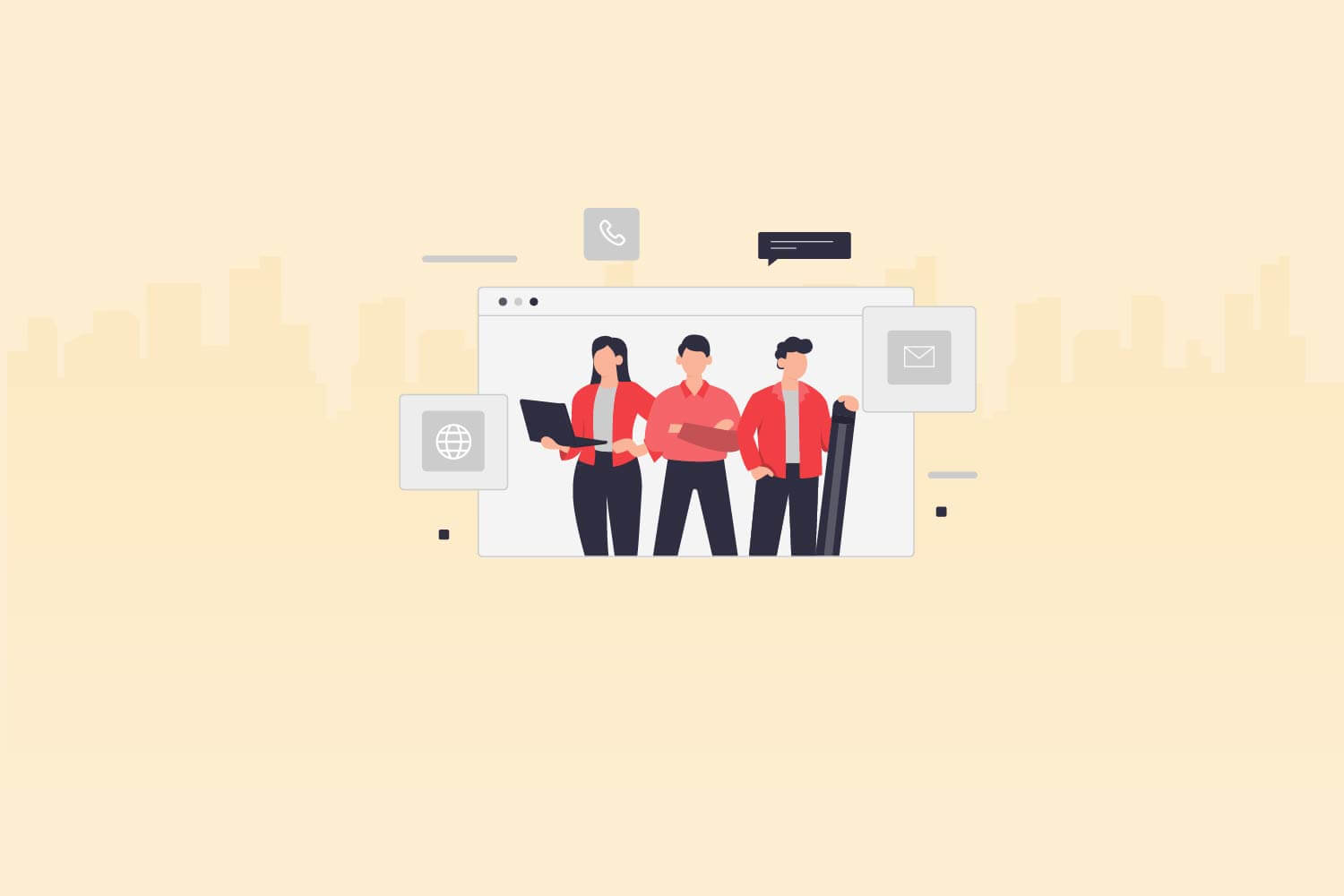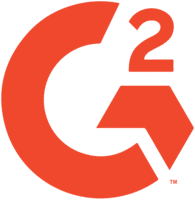The role of Benefits Administrator has become increasingly crucial in today’s competitive job market, as organizations strive to attract and retain top talent by offering comprehensive benefits packages. With the growing emphasis on employee well-being and satisfaction, the demand for skilled Benefits Administrators has surged in recent years. According to industry analytics, the recruiting trend for Benefits Administrators indicates a significant increase in job postings, with a focus on professionals who possess a strong understanding of employee benefits programs, compliance regulations, and effective administration techniques.
HR professionals and CXOs recognize that a well-designed and efficiently managed benefits program plays a vital role in not only attracting but also retaining and engaging employees. As the landscape evolves, organizations are seeking Benefits Administrators who can navigate complex benefit plans, adapt to changing regulations, and effectively communicate and educate employees about their benefit options. This shift highlights the importance of hiring talented professionals who can strategically design, implement, and administer benefits programs that align with the organization’s goals while ensuring employee satisfaction and compliance.
Here are the top 60 Benefits Administrator interview questions to ask job applicants:
15 general interview questions for the Benefits Administrator
- Can you explain your experience in designing and implementing employee benefits programs?
- How do you stay updated on the latest trends and regulations in employee benefits?
- Can you describe your process for evaluating and selecting benefit providers or vendors?
- How do you ensure compliance with relevant laws and regulations in benefits administration?
- What strategies do you employ to effectively communicate and educate employees about their benefits?
- Can you provide an example of a challenging benefits-related issue you encountered and how you resolved it?
- How do you handle employee inquiries or concerns regarding their benefits?
- Can you share your experience with analyzing benefits data and using it to make informed decisions?
- How do you ensure the accuracy and integrity of benefits-related data and records?
- Can you describe your approach to coordinating open enrollment periods and managing benefit changes?
- How do you assess the effectiveness and impact of employee benefits programs?
- Can you explain your experience in managing retirement plans and ensuring their compliance?
- How do you handle confidential and sensitive information in your role as a Benefits Administrator?
- Can you provide an example of a time when you successfully negotiated benefit terms or pricing with a vendor?
- How do you stay organized and manage multiple priorities in your role as a Benefits Administrator?
5 sample answers to general interview questions for the Benefits Administrator
- Can you explain your experience in designing and implementing employee benefits programs?
Look for: Knowledge of benefit program design principles, experience in tailoring programs to meet employee needs, and the ability to align benefits with organizational goals.
Example answer: “In my previous role, I had the opportunity to design and implement employee benefits programs that were customized to meet the diverse needs of our workforce. I conducted thorough needs assessments and gathered feedback from employees to understand their preferences and priorities. Based on this information, I collaborated with benefit providers to design comprehensive programs that included healthcare coverage, retirement plans, wellness initiatives, and flexible spending accounts. I also ensured that these programs aligned with the organization’s strategic objectives, promoting employee well-being and engagement while managing costs effectively.”
- How do you stay updated on the latest trends and regulations in employee benefits?
Look for: Continuous learning mindset, familiarity with industry resources, and active participation in professional networks.
Example answer: “I have a strong commitment to staying informed about the latest trends and regulations in employee benefits. I regularly attend industry conferences and seminars, where I have the opportunity to learn from experts and gain insights into emerging practices. I also subscribe to reputable publications and online forums that provide up-to-date information on legislative changes and industry best practices. Additionally, I actively participate in professional networks, engaging in discussions and knowledge-sharing with other Benefits Administrators. By consistently seeking new information and staying connected to industry peers, I ensure that our benefits programs remain current and compliant.”
- Can you describe your process for evaluating and selecting benefit providers or vendors?
Look for: A systematic approach to vendor evaluation, consideration of cost-effectiveness and service quality, and experience in contract negotiation.
Example answer: “When evaluating and selecting benefit providers or vendors, I follow a comprehensive process. First, I identify the specific needs of the organization and define the criteria for evaluating potential vendors. I gather proposals from multiple providers and thoroughly assess their offerings, considering factors such as cost-effectiveness, service quality, network coverage, and customer support. I also conduct reference checks and analyze customer satisfaction surveys to ensure reliability. Once a preferred vendor is selected, I engage in contract negotiations to secure favorable terms and conditions. By conducting a thorough evaluation and selecting reputable vendors, I ensure that our employees receive quality benefits and exceptional service.”
- How do you ensure compliance with relevant laws and regulations in benefits administration?
Look for: Knowledge of benefit compliance regulations, experience in developing and implementing compliance processes, and attention to detail.
Example answer: “Compliance with laws and regulations is a top priority in benefits administration. I stay updated on the latest legal requirements and regulatory changes related to benefits, such as ERISA, ACA, and HIPAA. I work closely with legal and compliance teams to interpret and apply these regulations accurately. I have developed a comprehensive compliance process that includes regular audits of benefit plans, documentation reviews, and internal controls. Additionally, I collaborate with legal counsel and external consultants to conduct periodic compliance assessments and ensure adherence to all applicable laws. By maintaining a strong focus on compliance, I mitigate risks and protect the organization and its employees.”
- How do you handle employee inquiries or concerns regarding their benefits?
Look for: Strong communication and customer service skills, the ability to provide clear and accurate information, and empathy toward employee concerns.
Example answer: “When addressing employee inquiries or concerns about their benefits, I prioritize clear and timely communication. I actively listen to their questions or issues and respond with empathy and understanding. I strive to provide accurate and detailed information, explaining benefit options, coverage details, and claim processes in a manner that is easily understandable. If I don’t have an immediate answer, I make a commitment to follow up promptly and ensure that the employee’s concern is resolved. By being approachable, responsive, and transparent in my communication, I aim to provide a positive experience for employees and build trust in our benefits program.”
15 behavioral interview questions for a Benefits Administrator
- Describe a situation where you had to handle a complex benefits-related problem. How did you approach it, and what was the outcome?
- Can you share an example of a time when you had to prioritize multiple competing tasks or deadlines in your role as a Benefits Administrator?
- Tell me about a time when you had to communicate a challenging benefits-related change to employees. How did you ensure understanding and acceptance?
- Describe a situation where you had to handle confidential employee information with discretion and maintain data privacy. How did you ensure compliance?
- Can you provide an example of a time when you identified an opportunity to improve a benefits process or procedure? How did you go about implementing the improvement?
- Tell me about a time when you had to resolve a disagreement or conflict with a benefits provider. How did you approach the situation and achieve a positive outcome?
- Describe a situation where you had to navigate a complex benefits-related compliance issue. How did you ensure adherence to regulations and mitigate risks?
- Can you share an example of a time when you successfully managed open enrollment periods, ensuring a smooth and efficient process for employees?
- Tell me about a challenging interaction you had with an employee regarding their benefits. How did you handle it, and what was the result?
- Describe a situation where you had to handle a benefit claim dispute or discrepancy. How did you investigate and resolve the issue?
- Can you provide an example of a time when you had to collaborate with other departments, such as HR, finance, or legal, to ensure effective benefits administration?
- Tell me about a time when you had to deliver a presentation or training session to employees regarding their benefits. How did you ensure engagement and understanding?
- Describe a situation where you had to manage a significant change in benefits plans or providers. How did you ensure a smooth transition for employees?
- Can you share an example of a time when you had to analyze benefits data to identify trends or insights for decision-making purposes?
- Tell me about a time when you had to handle a sensitive employee benefits-related situation with compassion and empathy. How did you support the employee and maintain confidentiality?
5 sample answers to behavioral interview questions for the Benefits Administrator
- Describe a situation where you had to handle a complex benefits-related problem. How did you approach it, and what was the outcome?
Look for: Problem-solving skills, analytical thinking, the ability to handle complexity, and effective resolution.
Example answer: “In a previous role, we encountered a complex benefits-related problem when our healthcare provider unexpectedly terminated a specific coverage option for employees. To address this issue, I initiated a thorough analysis of alternative options available in the market. I researched and evaluated different plans, considering cost, coverage, and employee preferences. I then presented the findings to the leadership team and proposed revised benefits offering that met our budget constraints while ensuring comprehensive coverage for employees. The outcome was a successful transition to a new plan, minimizing disruption for employees and maintaining their satisfaction with the benefits program.”
- Can you share an example of a time when you had to communicate a challenging benefits-related change to employees? How did you ensure understanding and acceptance?
Look for: Communication skills, change management abilities, empathy, and employee engagement.
Example answer: “In a previous organization, we had to implement a significant change to our retirement plan, including adjustments to matching contributions and vesting schedules. To ensure a smooth transition, I developed a comprehensive communication plan. I organized town hall meetings to explain the changes, provided written materials, and conducted one-on-one sessions to address individual concerns. I emphasized the rationale behind the changes, highlighting the long-term benefits for employees. Additionally, I established an open-door policy, encouraging employees to approach me with any questions or uncertainties. By fostering transparent communication and actively listening to employee feedback, we achieved a high level of understanding and acceptance of the new retirement plan.”
- Describe a situation where you had to navigate a complex benefits-related compliance issue. How did you ensure adherence to regulations and mitigate risks?
Look for: Compliance knowledge, attention to detail, problem-solving skills, and risk management.
Example answer: “In my previous role, we faced a complex compliance issue related to COBRA administration. The issue involved accurately determining eligibility, calculating premiums, and managing timely notifications. To address this, I conducted a comprehensive review of our processes, seeking guidance from legal counsel and industry experts. I implemented a robust auditing system to ensure accurate eligibility determination, established automated reminders for premium payments and enhanced our notification procedures to meet regulatory requirements. Through these measures, we mitigated compliance risks and ensured strict adherence to COBRA regulations, minimizing potential liabilities for the organization.”
- Can you provide an example of a time when you successfully managed open enrollment periods, ensuring a smooth and efficient process for employees?
Look for: Organizational skills, attention to detail, ability to handle high-volume tasks, and employee satisfaction.
Example answer: “During open enrollment in my previous position, I implemented several strategies to ensure a seamless and efficient process for employees. I started by developing a comprehensive communications plan, including emails, newsletters, and informational sessions, to educate employees about their options and deadlines. I collaborated with benefit providers to establish user-friendly online enrollment platforms and provided personalized assistance to employees navigating the system. To ensure accuracy, I conducted regular audits of enrollment data and addressed any discrepancies promptly. As a result of these efforts, we experienced a significant reduction in enrollment errors and received positive feedback from employees, who appreciated the smooth and hassle-free process.”
- Describe a situation where you had to analyze benefits data to identify trends or insights for decision-making purposes.
Look for: Analytical skills, data interpretation abilities, attention to detail, and the ability to draw meaningful conclusions.
Example answer: “In my previous role, I was responsible for analyzing benefits data to identify cost-saving opportunities without compromising the quality of benefits. I conducted a thorough examination of claims data, utilization patterns, and industry benchmarks. Through data segmentation and trend analysis, I identified areas of potential cost containment, such as high-cost procedures or overutilization of certain services. I presented these findings to the leadership team, along with recommendations for alternative benefit designs and cost-sharing strategies. By leveraging data-driven insights, we were able to make informed decisions that resulted in cost savings while maintaining competitive benefits for our employees.”
15 personality interview questions for the Benefits Administrator
- How do you prioritize your workload when faced with multiple tasks and deadlines as a Benefits Administrator?
- Describe a situation where you had to adapt to a significant change in benefits regulations or industry practices. How did you handle it?
- How do you approach building relationships with benefit providers and vendors to ensure effective collaboration?
- Tell me about a time when you had to handle a high-stress situation in your role as a Benefits Administrator. How did you manage it?
- Can you describe a situation where you had to exercise discretion and maintain confidentiality in handling sensitive employee benefits information?
- How do you ensure accuracy and attention to detail when managing benefit enrollments, claims, or data?
- Describe a time when you had to resolve a difficult or sensitive situation with an employee regarding their benefits. How did you handle it?
- How do you stay updated on the latest trends and best practices in employee benefits administration?
- Can you provide an example of a time when you had to explain complex benefits-related information to employees who had limited knowledge or understanding?
- Describe a situation where you had to collaborate with cross-functional teams, such as HR, finance, or IT, to ensure seamless benefits administration processes.
- How do you handle competing priorities and deadlines while maintaining a high level of accuracy and quality in your work as a Benefits Administrator?
- Tell me about a time when you had to mediate a conflict or disagreement between employees regarding their benefits. How did you facilitate a resolution?
- Describe a situation where you had to handle a significant volume of benefit-related inquiries or requests from employees. How did you manage the workload effectively?
- How do you ensure that benefit programs are inclusive and meet the diverse needs of a multi-generational workforce?
- Can you share an example of a time when you demonstrated empathy and compassion in supporting an employee through a challenging benefits-related situation?
5 sample answers to personality interview questions for Benefits Administrator
- How do you prioritize your workload when faced with multiple tasks and deadlines as a Benefits Administrator?
Look for: Time management skills, ability to handle pressure, and organizational skills.
Example answer: “When faced with multiple tasks and deadlines, I prioritize my workload by assessing the urgency and impact of each task. I create a to-do list and break down complex projects into smaller, manageable tasks. I then assign realistic deadlines to each task and utilize time management techniques such as setting reminders and using productivity tools. By maintaining clear communication with stakeholders, I can manage expectations and negotiate deadlines when necessary. By staying organized and focused, I ensure that I meet the required deadlines and deliver high-quality work.”
- How do you approach building relationships with benefit providers and vendors to ensure effective collaboration?
Look for: Relationship-building skills, communication skills, and vendor management abilities.
Example answer: “I believe in establishing strong relationships with benefit providers and vendors to ensure effective collaboration. I start by conducting thorough research and due diligence to select reputable and reliable partners. I then initiate open and transparent communication channels, fostering a collaborative environment. I schedule regular meetings to discuss performance, address concerns, and explore opportunities for improvement. By actively listening to their feedback, addressing any issues promptly, and recognizing their contributions, I build trust and maintain positive relationships. This collaborative approach facilitates smoother benefit administration processes and enhances the overall employee experience.”
- How do you handle competing priorities and deadlines while maintaining a high level of accuracy and quality in your work as a Benefits Administrator?
Look for: Prioritization skills, attention to detail, and the ability to work under pressure.
Example answer: “To handle competing priorities and deadlines, I employ a systematic approach. First, I evaluate the urgency and importance of each task and identify any dependencies. Then, I create a timeline or action plan, breaking down tasks into manageable steps. I allocate dedicated time slots for each task based on their priority. I maintain focus on one task at a time, minimizing distractions, and ensuring thoroughness and accuracy. If needed, I proactively communicate with stakeholders and negotiate realistic deadlines. By staying organized, managing my time effectively, and maintaining a high level of attention to detail, I consistently deliver accurate and high-quality work, even under pressure.”
- How do you ensure that benefit programs are inclusive and meet the diverse needs of a multi-generational workforce?
Look for: Inclusivity awareness, understanding of diverse employee needs, and ability to design inclusive benefit programs.
Example answer: “To ensure that benefit programs are inclusive and meet the diverse needs of a multi-generational workforce, I take a proactive approach. I start by conducting thorough research and analysis to understand the demographics and preferences of our employee population. I engage in open dialogue with employees through surveys, focus groups, or one-on-one discussions to gather feedback and identify their unique needs. I then work closely with HR and leadership to design benefits programs that offer a range of options, flexibility, and customization. I also ensure that communication materials and resources are easily accessible and available in multiple formats. By incorporating diversity and inclusivity considerations into the design and communication of benefit programs, I create an environment where all employees feel valued and supported.”
- Can you share an example of a time when you demonstrated empathy and compassion in supporting an employee through a challenging benefits-related situation?
Look for: Empathy, active listening skills, and the ability to provide emotional support.
Example answer: “In a previous role, an employee approached me with a sensitive benefits-related situation involving a serious medical condition. I actively listened to their concerns, providing a safe and supportive space for them to share their challenges. I showed empathy by expressing genuine care and understanding for their situation. I provided them with detailed information about available resources, such as employee assistance programs, support groups, or specialized healthcare providers. I also offered to advocate on their behalf with insurance providers to ensure they received the necessary coverage. By providing emotional support, guidance, and practical assistance, I helped alleviate their stress and ensured they felt supported during a difficult time.”
When should you use skill assessments in your hiring process for Benefits Administrator?
Skill assessments can be valuable tools in the hiring process for Benefits Administrators. These assessments help evaluate a candidate’s proficiency in specific skills and knowledge relevant to the role. By using skill assessments, employers can make more informed hiring decisions, ensuring that candidates possess the required competencies for effective benefits administration.
Assessments are important because they provide objective and standardized measures of a candidate’s skills. They go beyond resumes and interviews, allowing employers to assess practical abilities and verify claimed expertise. Skill assessments can help identify candidates who excel in areas such as benefits administration software proficiency, knowledge of compliance regulations, data analysis, customer service, or problem-solving.
Various assessments can be used to assess skills for Benefits Administrators. For technical skills, employers can employ computer-based assessments or simulations to evaluate candidates’ proficiency in benefits management software, data analysis tools, or spreadsheets. For knowledge-based skills, such as understanding compliance regulations or benefit plan design, employers can utilize multiple-choice assessments or scenario-based exercises. Additionally, role-playing exercises or situational judgment tests can be used to assess critical skills like customer service, communication, and decision-making.
In summary, using skill assessments in the hiring process for Benefits Administrators ensures a more comprehensive evaluation of candidates’ capabilities. These assessments provide objective measures of technical proficiency, knowledge, and critical skills, helping employers select candidates who possess the necessary competencies to excel in the role.
Use our interview questions and skill tests to hire talented Benefits Administrators
Unlock the potential of your hiring process with Testlify’s comprehensive skill assessments and interview questions specifically designed for Benefits Administrators.
Our extensive test library offers a wide range of assessments, including cognitive function, personality, situational judgment, programming, and more. By leveraging these assessments, you can objectively evaluate candidates’ abilities, ensuring you shortlist the most talented individuals efficiently.
To further enhance your hiring process, we invite you to book a free 30-minute live demo. Our expert team will guide you through the platform, showcasing relevant skill tests tailored to your hiring needs. With our support, you can streamline candidate selection, saving valuable time and resources.
Ready to find the perfect fit for your Benefits Administrator role? Testlify provides the tools you need to make informed hiring decisions. Explore our skill assessments and interview questions today to uncover exceptional talent for your team.








